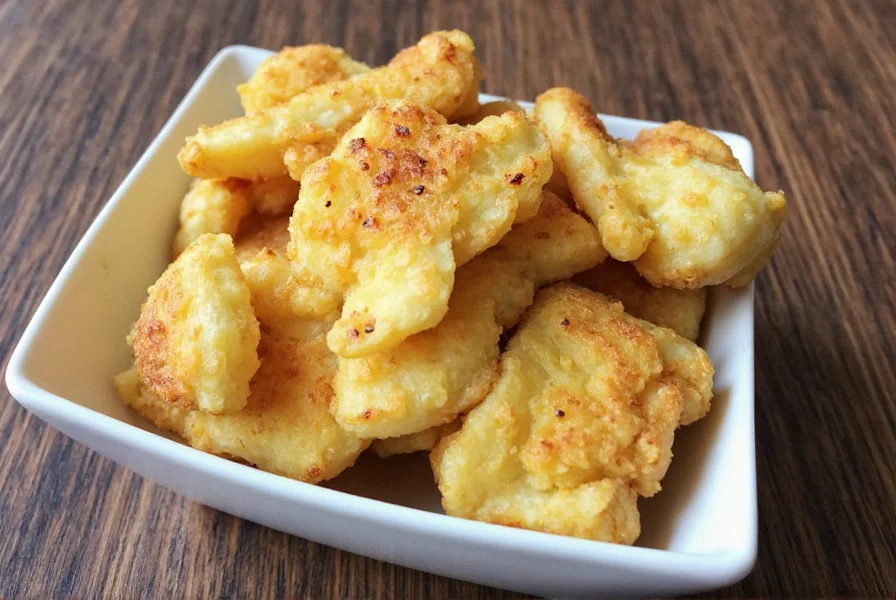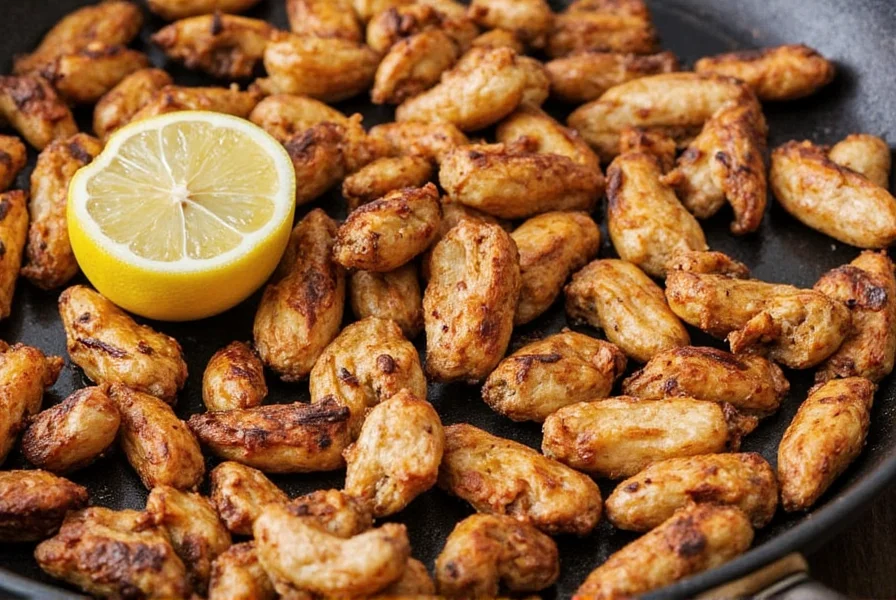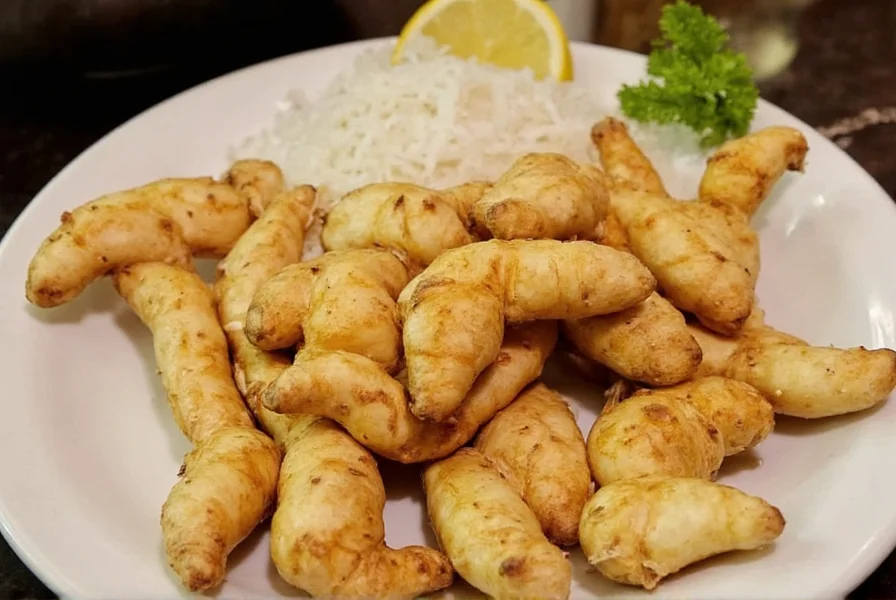Grilled ginger represents a culinary technique that fundamentally alters ginger's flavor profile and application in cooking. Unlike raw ginger with its sharp, fiery bite, grilling ginger mellows its pungency while developing nuanced sweet and smoky characteristics through the Maillard reaction and caramelization of natural sugars.
The Science Behind Grilled Ginger
When ginger hits high heat, chemical transformations occur that change both its flavor and potential health properties. Raw ginger contains high levels of gingerol, the compound responsible for its characteristic heat and many of its health benefits. Grilling converts gingerol into zingerone, which has a milder, sweeter flavor profile while retaining some antioxidant properties.
This thermal transformation makes grilled ginger particularly valuable in dishes where raw ginger's intensity would overwhelm other ingredients. The process also softens ginger's fibrous texture, making it more palatable in applications where raw ginger might be too harsh.
Step-by-Step Guide to Perfect Grilled Ginger
Creating properly grilled ginger requires attention to detail. Follow these steps for optimal results:
- Select fresh, firm ginger rhizomes with smooth skin and no wrinkles
- Peel ginger thoroughly using a spoon to avoid removing too much flesh
- Slice into 1/4-inch thick rounds for even cooking
- Preheat grill or grill pan to medium-high heat (approximately 375°F)
- Lightly brush ginger slices with neutral oil to prevent sticking
- Grill for 2-3 minutes per side until edges caramelize but centers remain tender
- Remove immediately to prevent overcooking, which can make ginger bitter

Flavor Profile Comparison: Raw vs. Grilled Ginger
| Characteristic | Raw Ginger | Grilled Ginger |
|---|---|---|
| Primary Flavor Notes | Sharp, pungent, citrusy, fiery | Sweet, mellow, smoky, caramelized |
| Heat Level | High (gingerol dominant) | Moderate (zingerone dominant) |
| Best Culinary Applications | Strong-flavored dishes, pickling, baking | Delicate sauces, seafood, desserts, tea |
| Texture | Fibrous, tough when raw | Softer, more tender |
Optimal Culinary Applications for Grilled Ginger
Understanding when to use grilled ginger versus raw ginger separates novice cooks from experienced ones. Grilled ginger shines in applications where you want ginger flavor without overwhelming heat:
- Seafood dishes: The milder flavor complements delicate fish without overpowering
- Cream-based sauces: Adds subtle warmth without curdling dairy
- Desserts and baked goods: Provides nuanced ginger flavor in cakes and cookies
- Tea and beverages: Creates a smoother, less aggressive ginger tea
- Vegetable preparations: Enhances roasted vegetables without dominating
Professional chefs often use grilled ginger when creating dishes for guests who claim they "don't like ginger"—the transformation makes it far more approachable while retaining distinctive flavor characteristics.
Storage and Preservation Techniques
Properly stored grilled ginger maintains quality for limited time compared to raw ginger. After grilling:
- Refrigerate in an airtight container for up to 5 days
- Freeze between parchment paper layers for up to 3 months
- Preserve in simple syrup for sweet applications (lasts 2 weeks refrigerated)
- Dehydrate for powdered grilled ginger (store in dark container for 6 months)
Unlike raw ginger, which can be stored for weeks, grilled ginger's increased moisture content from the cooking process reduces its shelf life significantly. For best flavor, use within 2-3 days of preparation.
Common Mistakes to Avoid
Many home cooks make critical errors when preparing grilled ginger that compromise results:
- Overcooking: Turns ginger bitter as natural sugars burn
- Using high heat: Causes exterior charring before interior transforms
- Skipping the peel: Unpeeled ginger doesn't caramelize properly
- Not slicing uniformly: Leads to inconsistent cooking
- Using old ginger: Lacks sufficient moisture and flavor compounds

Health Implications of Grilled Ginger
While raw ginger contains higher concentrations of gingerol (associated with anti-inflammatory properties), grilled ginger develops zingerone, which research suggests has different but still valuable antioxidant effects. The grilling process reduces but doesn't eliminate ginger's potential digestive benefits.
Those seeking maximum health benefits might prefer raw ginger in certain applications, while those needing gentler digestion support—such as individuals with sensitive stomachs—may find grilled ginger more suitable. The milder nature of grilled ginger makes it appropriate for consumption in larger quantities than raw ginger for those who find raw ginger too intense.
Traditional Uses Across Cuisines
Though not as common as raw ginger in global cuisines, grilled ginger appears in specific traditional preparations:
- Japanese cuisine uses lightly grilled ginger in delicate dashi broths
- Korean chefs sometimes grill ginger for certain medicinal teas
- Some Caribbean preparations incorporate grilled ginger in fruit chutneys
- Modern fusion cuisine employs grilled ginger in unexpected applications like ice cream
Understanding these cultural contexts helps cooks apply grilled ginger authentically while respecting traditional techniques that have evolved over generations.
Frequently Asked Questions
Can I use a regular stove instead of a grill for preparing grilled ginger?
Yes, a cast-iron skillet or griddle pan on your stove works perfectly for preparing grilled ginger. Preheat to medium heat, add minimal oil, and follow the same timing guidelines as you would on an outdoor grill. The key is achieving even caramelization without burning.
Does grilled ginger lose significant nutritional value compared to raw ginger?
Grilled ginger undergoes chemical changes that transform gingerol into zingerone, altering but not eliminating its nutritional profile. While some heat-sensitive compounds decrease, new beneficial compounds form during the grilling process. The overall antioxidant capacity remains substantial, though the specific health benefits differ slightly from raw ginger.
What's the best way to incorporate grilled ginger into beverages?
For beverages, steep grilled ginger slices in hot water for 5-7 minutes for tea. The milder flavor blends beautifully with green tea, citrus fruits, and honey. In cold beverages, muddle the grilled ginger gently to release flavors without making the drink fibrous. Grilled ginger works particularly well in cocktails where raw ginger might be too aggressive.
How can I tell if I've properly grilled ginger versus overcooked ginger?
Properly grilled ginger shows golden-brown caramelization on the edges with a tender but intact center. It should bend slightly when picked up with tongs but not break apart. Overcooked ginger becomes dark brown or black at the edges, develops a bitter aroma, and crumbles when handled. The ideal texture is soft but still holds its shape with visible grill marks.
Can I substitute grilled ginger for raw ginger in recipes?
Substitution requires adjustment as grilled ginger has approximately half the intensity of raw ginger. As a general rule, use 2 parts grilled ginger for every 1 part raw ginger called for in a recipe. Remember that grilled ginger adds subtle smokiness that raw ginger doesn't provide, which may alter the final flavor profile of your dish.











 浙公网安备
33010002000092号
浙公网安备
33010002000092号 浙B2-20120091-4
浙B2-20120091-4